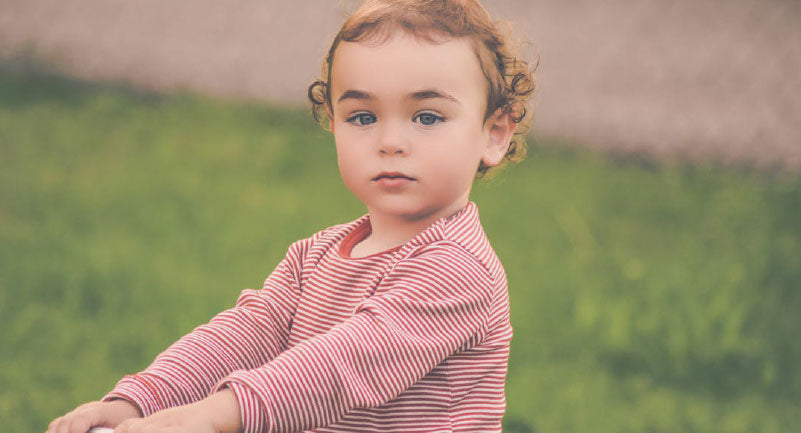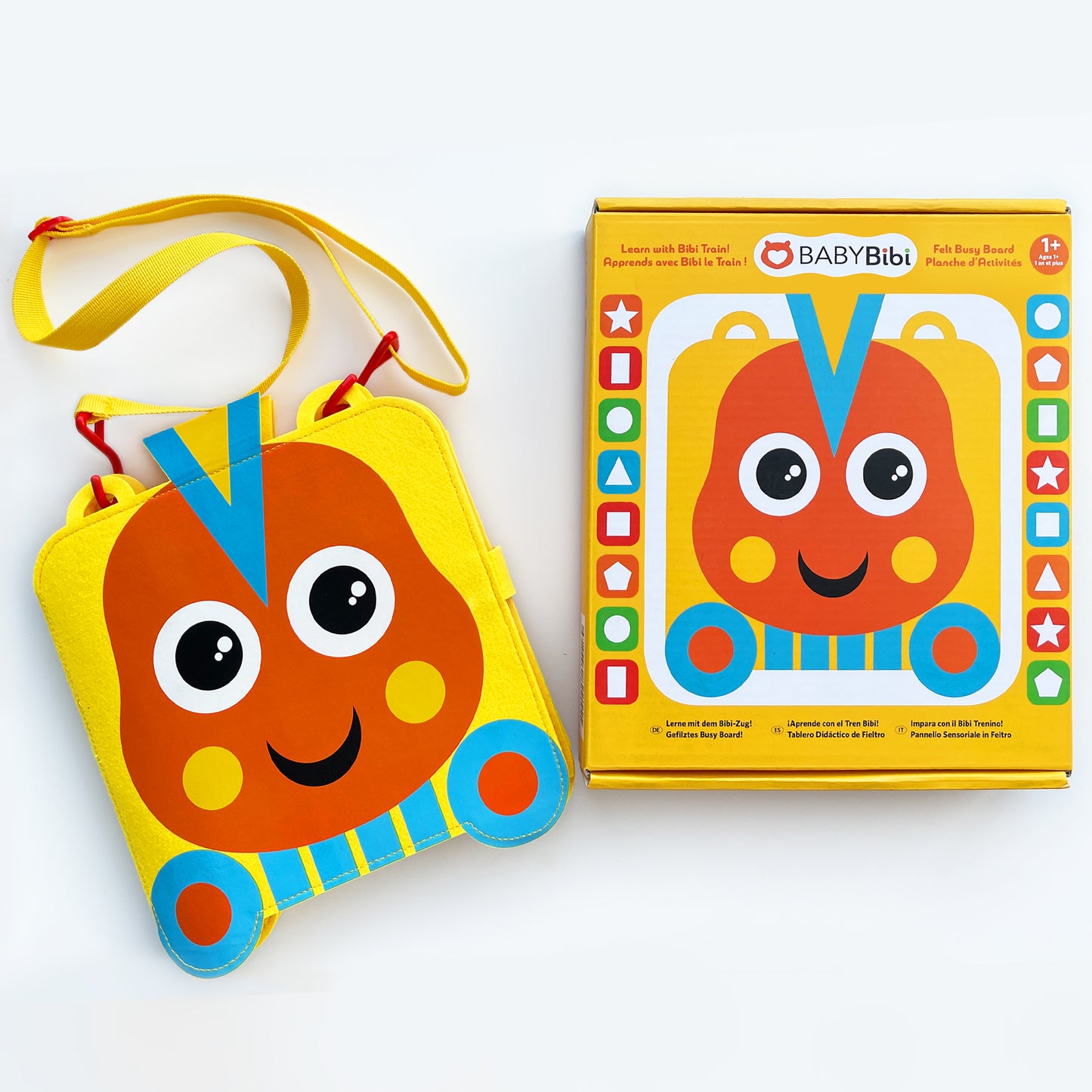
Your toddler is 2-3 Years old
Puffy Paint
This arts and crafts activity will let toddlers have a blast painting. Pu y Paint learning outcomes include col- or recognition, ne motor development, eye-hand coordination, self-expression and creative thinking, and self- initiated motivation. What’s the recipe to make Pu y Paint? All ingredients including salt (1 Tbsp.), Food coloring (3 tsp) and Self-rising our (1 Tbsp.) must be combined together and mixed well to create a pasty consistency. This should be done for all paint colors. When the mixture is prepared to satisfaction, it’ll be poured into paint pots and cooked in a microwave.
Kids making Pu y Paint magic also need water, cardboard (cut pieces), paint brushes, measuring spoons and a tray (paint). Of course, this activity has learning bene ts such as improving visual motor skills (eye- hand coordination) and realizing physical developmental milestones. Pu y Paint also encourages e ective motor skills ( ne/gross) re nement. Children will learn self-expression values and unlock creativity. Color rec- ognition is another achievement realized when kids play Pu y Paint. Young children will learn how to recog- nize their achievements and develop humility no matter how grand or trivial the exercise. This encourages self-con dence as a child realizes competence. It’s the fundamental way to help kids achieve psychological balance. Instead of embracing shame and embarrassment that often cause a child to be withdrawn, Pu y Paint teaches how to convert failure into positive energy. This cripples the arms of social rejection which is usually associated with bullying.
Ice World
Games that focus on sensory exploration provides appropriate stimulation for the little ones’ senses. Kids need to also realize motor skills (gross/ ne) development, which can be achieved with Ice World and other educational adventures. Exploratory learning trains the senses and in its purest form, open-ended sensory play vastly supports this experience because it’s not product-oriented and unstructured.
Ice World lets children experiment with water, sea themes and ice. While playing this sensory ice tube activ- ity, they’ll become more socially exposed, re ne motor skills and support eye-hand coordination. Toddlers will also bene t from language exploration and learning experiences that bolster their imagination. What’s needed for Ice World? Kids will need water, a tub (large), sea creatures (plastic), good coloring and contain- ers. Oddly shaped containers make beautiful Ice World models. It gets even more interesting when they’re frozen and enhanced with color llers.
For example, biscuit trays, and yogurt containers can give ice World the dramatic look it needs with pat- terned frozen ice. Food coloring can be mixed with water and applied for graphical e ects. It’s easier to re- move frozen ice from containers when it’s partially melted. This shouldn’t take longer than
Gloop
Kids of all ages can explore learning and enjoy meaningful play with Gloop activities. It’s unstructured and kids will have messy fun making textured Gloop. This activity explores science-focused adventure and pro- vides sensory stimulation as children learn about liquid and solids. What’s the recipe for Gloop? It’s made in a container or bowl (large) where kids will combine food dye (2 drops), water (1 cup) and corn our (2 cups) to prepare a gooey mixture.
As they’re blending in the ingredients, kids will explore texture as Gloop transitions from a sticky consis- tency to slimy, and cold before forming the powder. As these changes happen, kids will become fascinat- ed with Gloop and share their experience with peers or parents. Gloop as the ability to take liquid or solid form depending on what’s introduced to t mixture. As water is added and kids apply pressure with the hands, Gloop will harden. Strangely, it’ll easily develop a liquid consistency if it’s set down where it can drib- ble.
The learning experiences children are exposed to when playing Gloop is phenomenal. For instance, Gloop lets them explore sensory stimulation to a great degree by touching, observing, listening, smelling and tasting. They’ll also develop fundamental social skills that motivate sharing, turning taking and practice negotiating. To some extent, Gloop also helps them re ne speech and language skills.

Find That Thing
With a limited attention span, kids easily get bored when they’re bombarded with activities and games that don’t really challenge them. Find That Thing is the kind of activity that gets them enthusiastic about learn- ing.
As growing children, preschoolers and toddlers need exposure to di erent environments to support their imagination. Find That Thing is an exemplary tool to help kids discover places and kids. With school ash cards, household articles and common surroundings, they’ll quickly become accustomed to these environ- ments. In no time, kids will learn how to describe di erent things or places and identify each by name.
Find That Thing is developed on the fundamental principle of exploring ashcard card images where kids can achieve cognitive development and improve literacy skills. In another instance, children will learn prop- er word pronunciation and enhance object recognition memory. When kids are exposed to memory train- ing activities with sensory exploration, they’ll take away vocabulary building skills, speech articulation and improve reading skills.
Young children commonly mispronounce words and have a high speech error rate, which can be addressed with repeated exposure to activities like Find That Thing. With phonological disorders or other speech in- consistencies, a child might face a tough time pronouncing certain words. Practices go a long way in helping him or her improve speech articulation. Find That Thing can also be utilized to identifying any speech or language development problems in young children.
Mazes
Where to go, ahead, right or left or turn back? Mazes set kids on a course of brain boosting challenges that’ll help them realize become physically stron- ger with visual motor skills. They’ll also gain enrichment from problem-solv- ing exercises while playing Mazes. The Maze can be a confusing place for children fol- lowing directions. For this learning adventure, kids will need Maze toys or activity books. The primary ed- ucational outcomes of playing Mazes include a sharpened imagination, motor skills development and en- hanced problem-solving abilities.
Once a child enters the maze, the objective is to reach the middle or center. This activity requires e ective problem-solving skills to determine the best approach. So what learning experiences will a child take away from playing Mazes? When writing and reading, a child should develop the skill of scan- ning letters or words properly and take notice of di erent forms to distin- guish consonant blends among other observa- tions.
Mazes heighten their scanning abilities with exposure to sensory stimulation activities to sharpening their natural skill. They’ll need to scan areas of the maze carefully to nd the middle or center as instructed. As kids are constantly train- ing and engaging in activities like Mazes, they’ll gradually develop competence in this area, which will bene t reading.
Pillow Case Hoppers
When toddlers and preschool children start playing Pillow Case Hoppers, it’s impossible to get them to stop. It challenges their physical ability with action-packed activities such as hopping in pillow cases and rolling in the grass. This classic game will get kids out and about to enjoy nature. They’ll spend long hours doing this physical education activity.
As usually, parents get concerned about how a game or activity will bene t their child’s development. Pil- low Case Hoppers doesn’t only allow them to get quality time exploring outdoors. It also supports a series of developmental milestones that help young children realize improvements coordination and movement. Furthermore, it’s an excellent tool to encourage meaningful thinking and build self-con dence. With quality outdoor exercises, Pillow Case Hoppers strengthen bones and support developing muscles in young chil- dren. Also, it helps them to regulate emotional balance to thrive in social environments. Children some- times face challenges adjusting to di erent social settings that stimulate fear and anxiety which is damaging to their integrity as a learner. In helping toddlers adjust to di erent social environments by encouraging group activities, they’ll easily wane shyness and anxiety to become con dent explorers. Ultimately, this will motivate participation while enabling a child to become an e ective team player and an active learner.
Paint Me
Another arts and crafts adventure geared towards toddlers’ ages 2-3 years, Paint Me supports a child’s imagination. When Paint Me is nished, it can be preserved as a family keepsake. Have portraits or photo images of children? How about making exact copies with Paint Me? Whether kids are exposed to this activ- ity at home or school, it’s a good arts and crafts activity to bolster brain power and encourage imaginative play.
Print any favorite face shot and glue it to paper. The image should be placed on the top since it’ll have a matching body. After the picture is glued to paper, simply paint the feet and hands. When the body is paint- ed and printed on paper, they should be air dried then cut out.
Kids usually keep it to decorate their bedroom door. With every look at this hilarious Paint Me keepsake, kids will immediately burst into giggles. While Paint Me creates quality family-oriented play, it inspires a positive work at- mosphere that supports sensory stimulation, self-expression, coordinating imaginative and color exploration.
Kids Car Wash Tunnel
Any experience constructing a makeshift car wash tunnel for kids? It’s quite an adventure that’ll keep the lit- tle ones and older kids physically active. When the makeshift car wash tunnel is completed, they’ll love play- ing inside even on rainy days. With kids navigating obstacles, pulling objects, wriggling, sliding and crawling as they’re exploring inside the car wash tunnel, they will indulge in quality learning activities that support gross motor development.
They’ll need scarves, cushions, stockings, a blanket (large), long socks, and dining chairs to build the infra- structure. The blanket should be large enough to form an enclosed makeshift car tunnel. All other materials will provide reinforcement for the tunnel. The scarves will hang nicely over adjoining chair seats, bolstering the tunnel with cushions, the blanket, and stockings. While navigating the tunnel, kids should avoid crash- ing into other children driving toy cars, buses or trucks. To improve accuracy, they’ll need a lot of practice especially younger children.
This activity promotes language development from exposure to repetitive words like ‘Peek-a-boo, ‘‘Wash,’ etc. With rich physical development exercises to build muscles, strengthen bones and support heart health, kids will become stronger competitors. Besides having a fun time, this activity also supports sensory stimu- lation, while enhancing coordination and movement.

